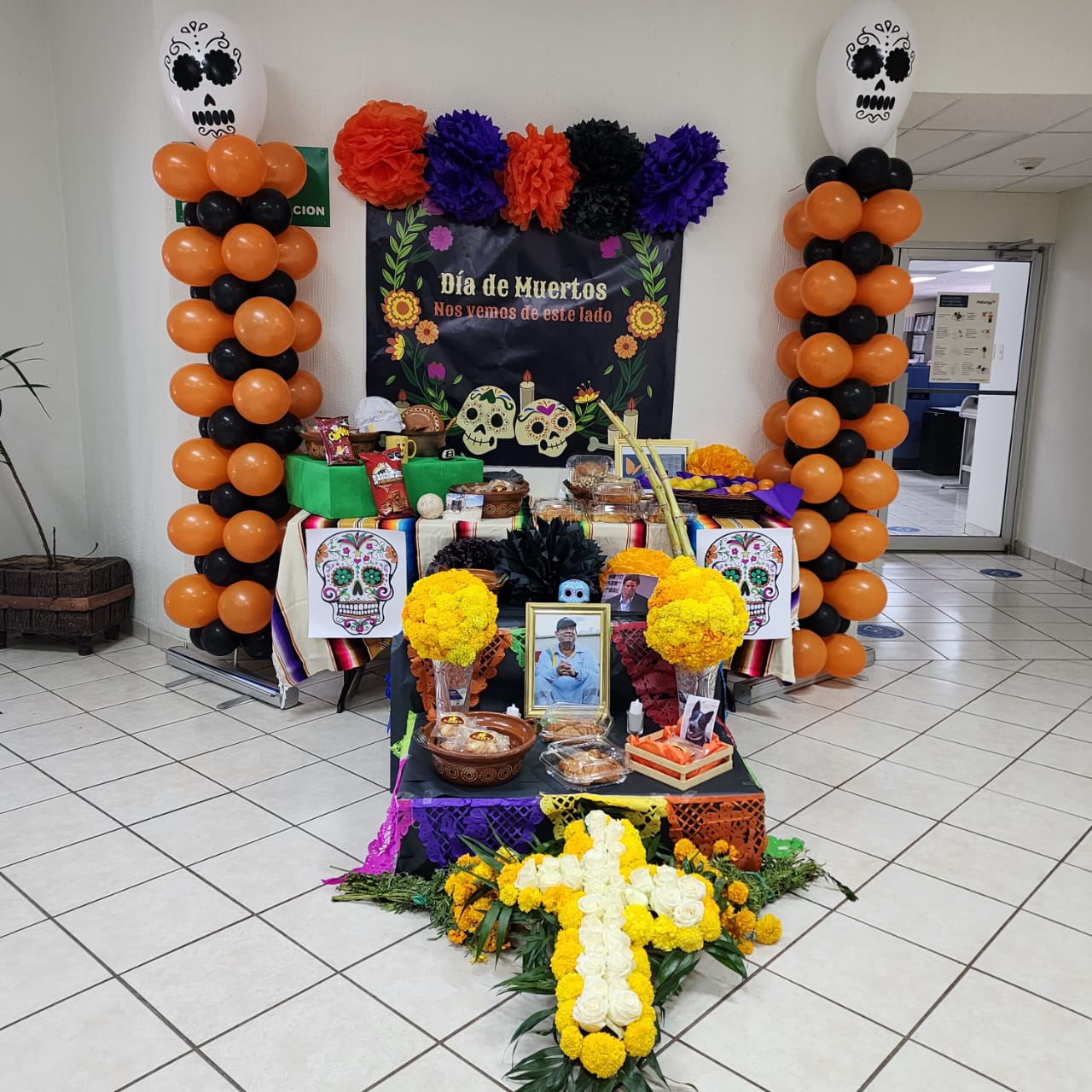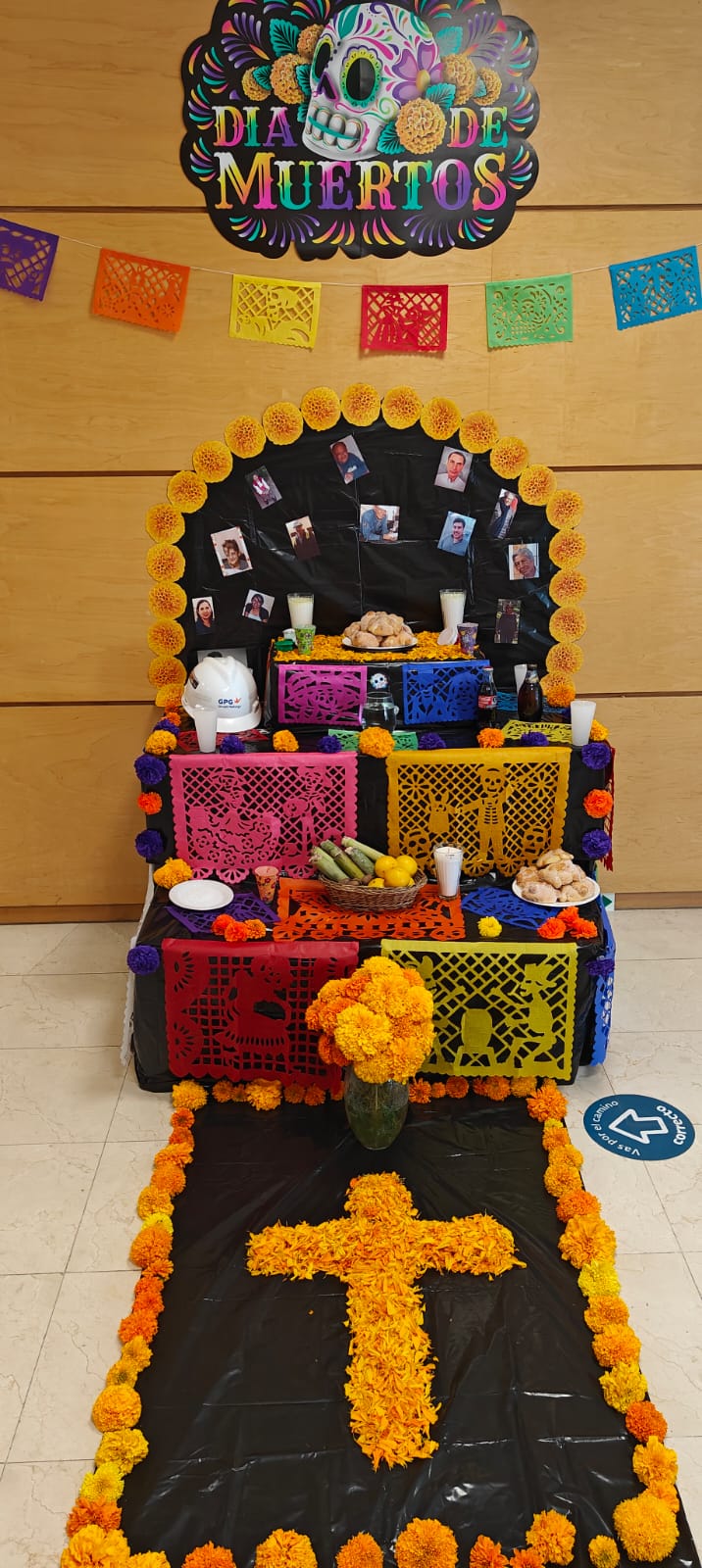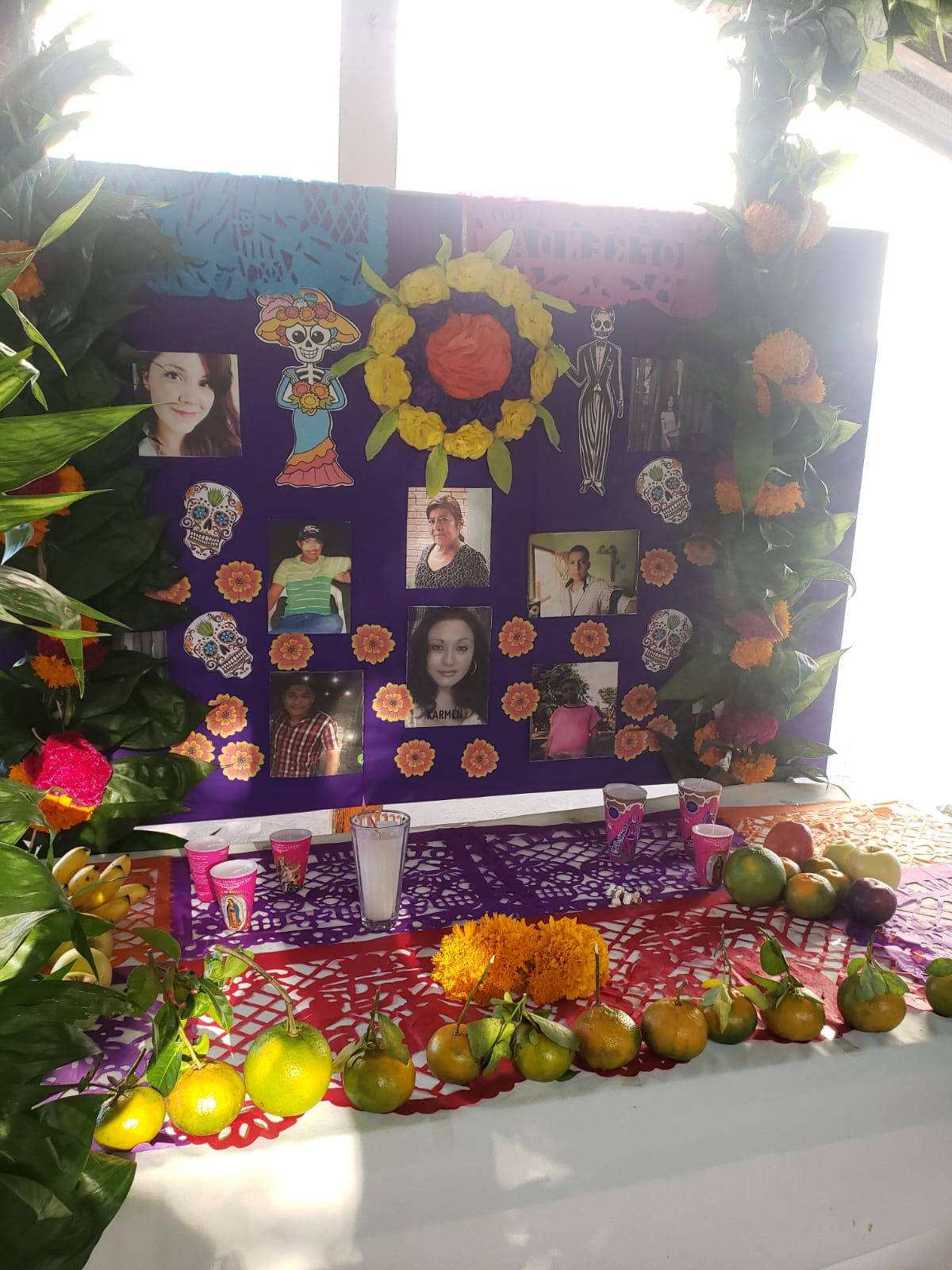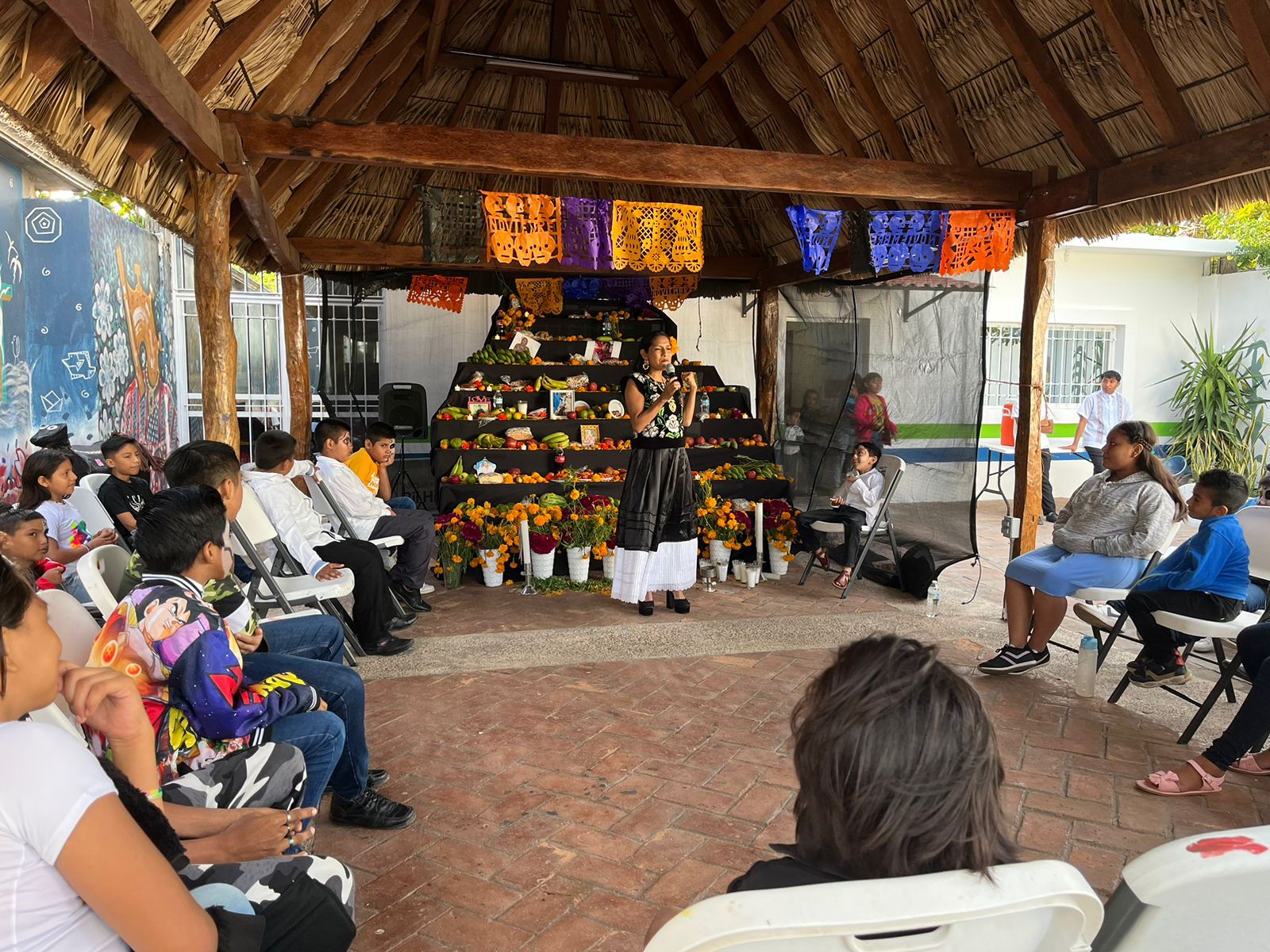Maa Xandu ´ndí
There is an expression in Zapotec: “maa xandu’ ndí”, meaning: “it’s all saints’ day now!”. This refers to the 2nd of November, when the dead are supposed to visit, guided by marigold flower petals of an unmistakable yellow colour, symbolising sunny days, and velvet or cockscomb flowers, with the purple colour signifying waiting or mourning.
One of the most important Mexican traditions is the one that takes place in some parts of the country from the end of October to the beginning of November, and is linked to remembrance. Many use it to reconnect with loved ones who have passed away.
In the vicinity of the Bií Hioxo wind farm, together with the community of children, young people, adults and Xquendas volunteers, a stepped altar (7 levels) to the dead was created in the style of the isthmus region. In Juchitán, during the celebration, the community brought flowers, fruit, bread and many of them held photographs of their loved ones, which gave rise to an activity in which anecdotes and stories of the relatives to whom the community altar was dedicated were told.
“Biyé’” or “Xandu'” is the celebration of the dead that, in Juchitán de Zaragoza, Oaxaca, takes place in the homes of each family (not in the cemetery as in other cultures in the country) on 30th and 3st October. If it has been a year or two since the person’s death (but not less than six months), they have their “biyé'” or “xandu’ yaa” (first celebration of the deceased) or “biropa” (second celebration), as the case may be.
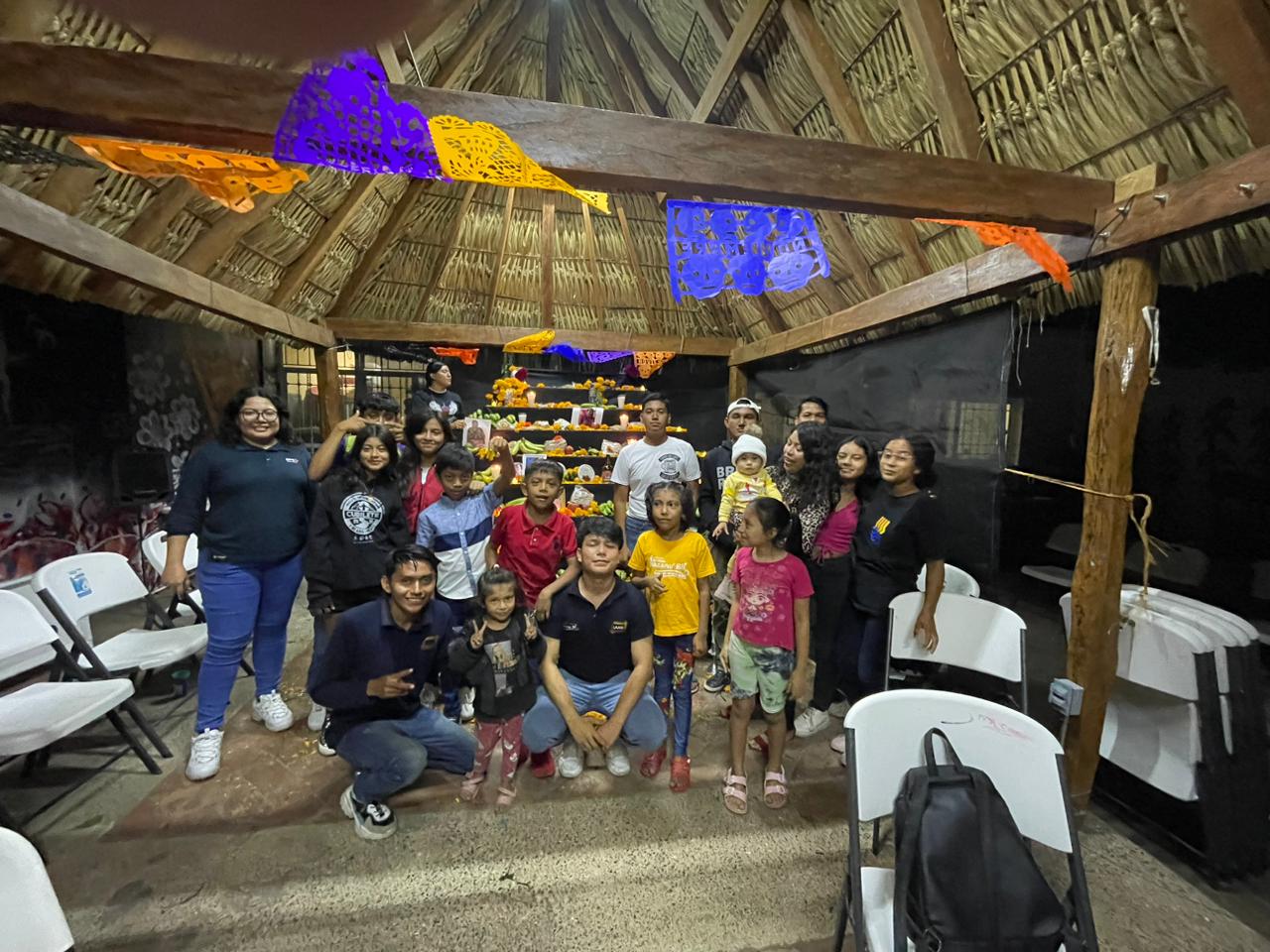
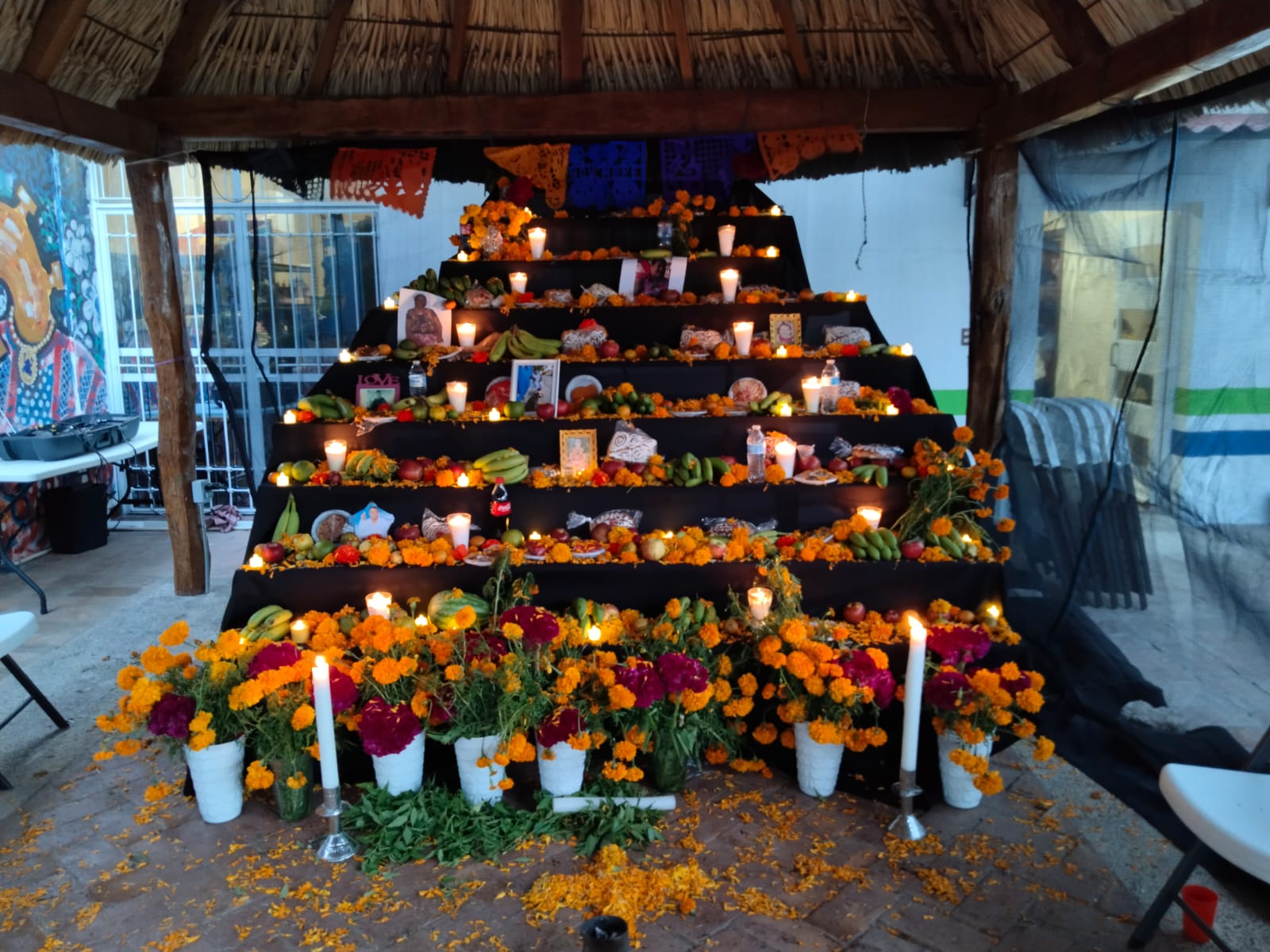
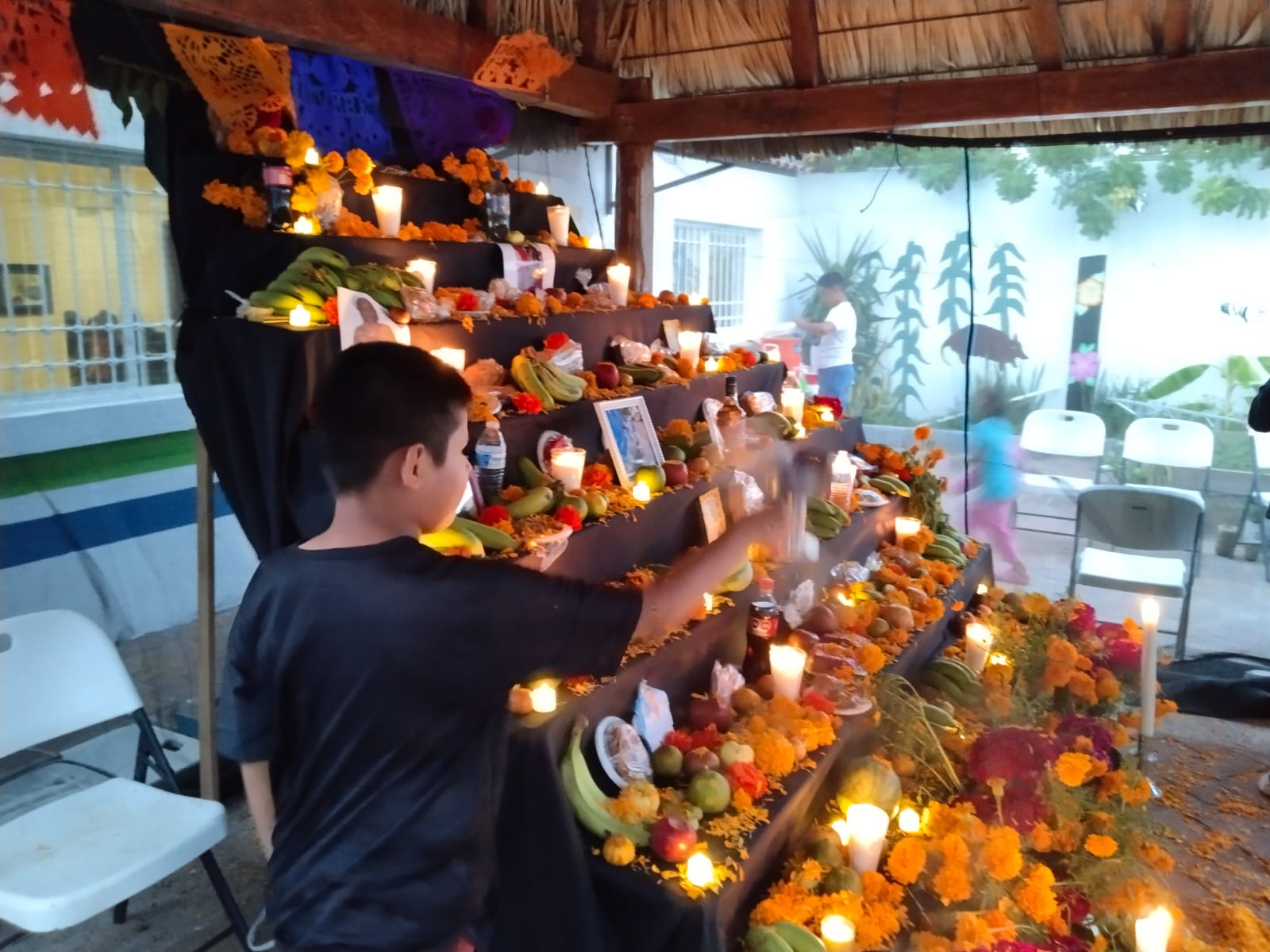
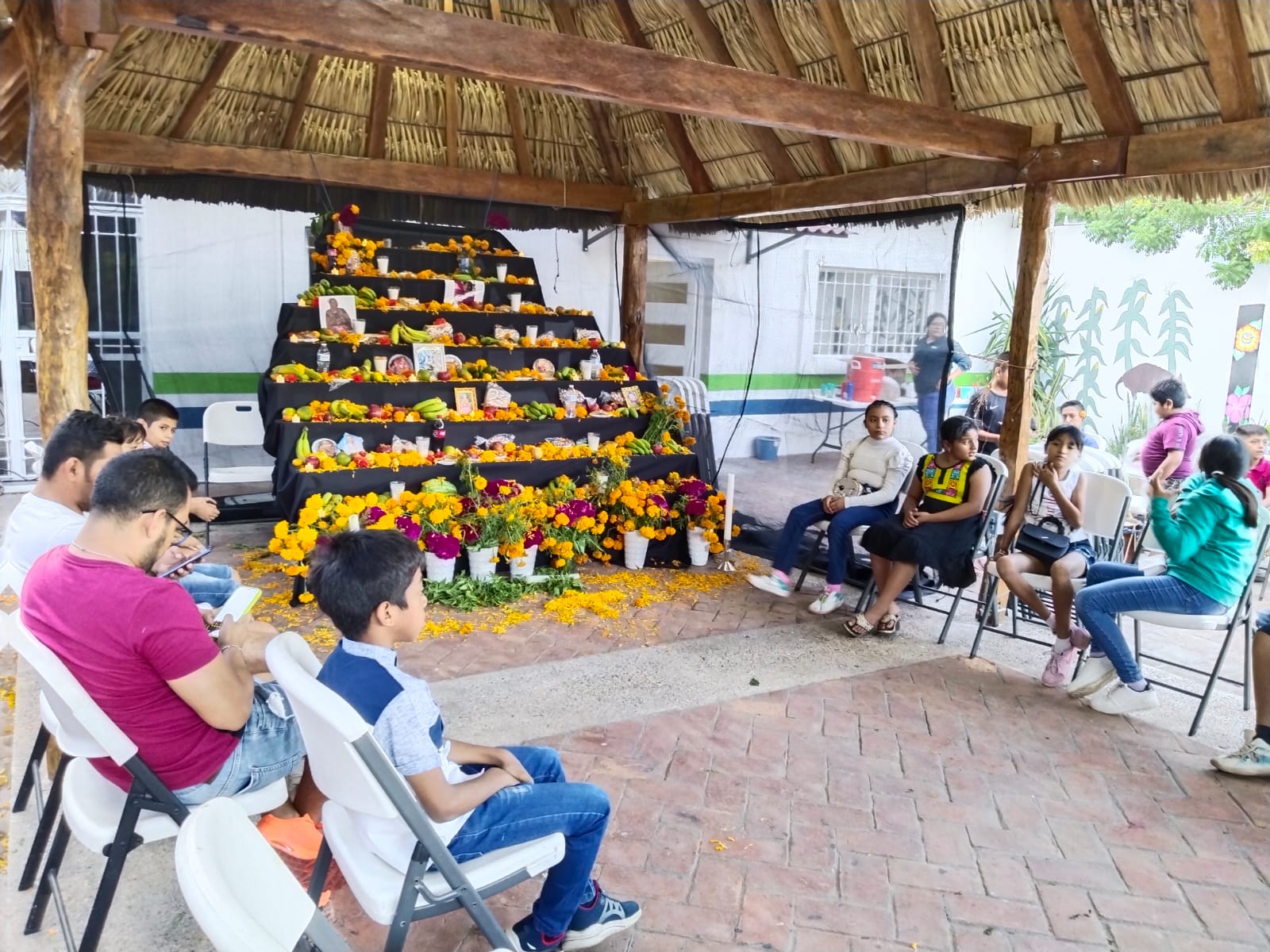
On 1 November, bilingual storyteller Felipa Noriega shared some stories in Spanish and Zapotec with the children who attended the celebration, which included a parade and Isthmian music. The carnival procession concluded at the community house with the screening of the film “Coco”, which was attended by more than 70 people.
K’alinnin (underworld) and Agapún (world of the gods) in the Totonacapan region
The Combined Cycle Plant Tuxpan III and IV borders two regions: the Totonacapan (Totonac people) and the Huasteca region (Tének and Nahua peoples). With the pupils of the Xalag Chúchut school, a communal offering was placed in the Totonac style.
The bottom of the table represents the underworld (k’alinnin), the place where the dead dwell. The board, or the part where the offerings are placed, is the earthly world (t’iyat). The upper part, where the decorated crescent-shaped murals and photographs of loved ones are placed, symbolises the celestial vault and the world of the gods (aqapun). The star-shaped cut paper is always 12 in number and represents the 12 sentinels of the universe. The bell in the centre is the sun (chichiní). In addition, on November 1st, when deceased children are celebrated, a little puchaw (child) receives sweets, candies, toys and fruit.
In addition to these community offerings, the teams from the facilities also set up altars or offerings to give continuity to this rich and vast tradition, which is inscribed on UNESCO’s list of Intangible Cultural Heritage of Humanity.
